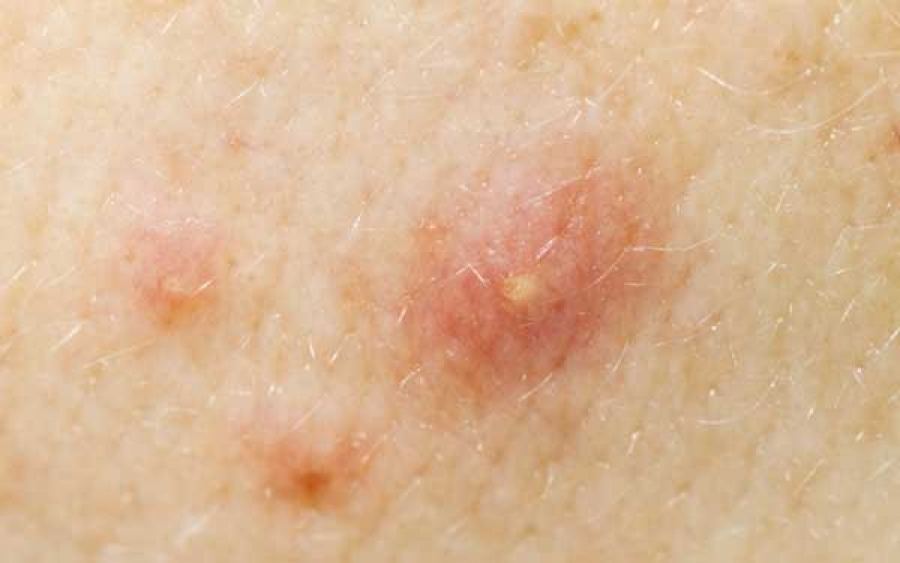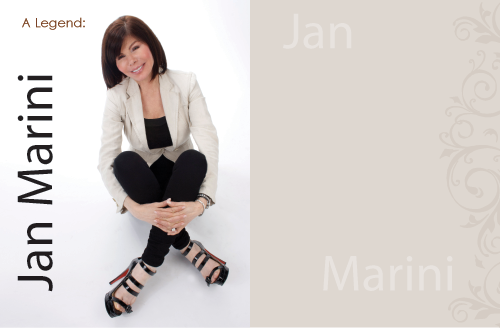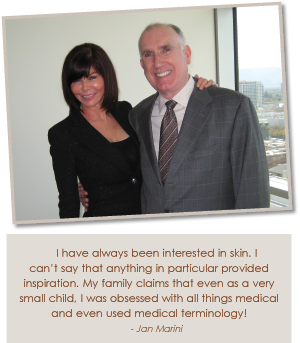Most acne-related problems seen in a skin care practice is minor grade 1 acne. Most more severe forms of acne are more frequently seen by dermatologists, who can prescribe more aggressive treatments and antibiotics to help these clients.
Aestheticians very frequently treat skin that tends to break out. These clients seem to always have one or two pimples, oily rough textured skin, as well as clogged and enlarged pores. The client is rightfully concerned about choosing products and cosmetics that will control oil and help prevent breakouts, as well as treatments to eliminate clogged pores.
In this article, we will discuss many of the frequent questions that clients have about acne-prone skin. We will also discuss basic concepts in helping the client with acne-prone skin.
Q: What actually causes acne-prone skin?
A: The tendency to develop acne or acne-related breakouts is largely due to two factors: heredity and hormones. Clients who develop acne or even clogged pores easily have a heredity tendency to a condition known as retention hyperkeratosis, in which the dead cells do not shed off the epidermis easily. Since the epidermis lines the follicle, cells build up on the follicle wall, clogging the follicle.
Q: What role does oiliness play in development of acne lesions?
A: The fact that acne-prone skin tends to also be oily again has to do with both heredity and hormones. Large, numerous, productive sebaceous glands are hereditary, as are the large pores associated with oily skin. The oil glands are “switched on” by hormones, which explains both the development of acne during puberty, as well as hormone related acne flares associated with pre-menstrual breakouts, and acne flares due to taking hormones as medication or some forms of birth control medications.
Oiliness “coats over” the dead cell build-up, forming plugs in the lower follicle called microcomedones. From this plug, the follicle can become impacted, cutting air off from the bottom of the follicle.
One of the most important things for aestheticians to understand is that microcomedones, which cannot be seen by examining the skin surface, are numerous in any skin that develops clogged pores and acne lesions easily. Controlling the microcomedones is key to effective treatment of acne-prone skin.
Q: How does a follicle impaction contribute to worsening of acne?
A: Propionibacterium Acnes, the bacteria that cause acne lesions are anaerobic, meaning that they flourish in an environment void of oxygen, such as the bottom of a follicle with a plug preventing aeration of the follicle. All follicles have some of these bacteria, but they are kept to a minimum by oxygen killing them off continually. Anything that blocks the follicle can create an anaerobic pocket.
Q: What role does stress play in acne flares?
A: Stress actually can cause hormone fluctuations that can cause sudden surges of oil and follicle inflammation that can lead to sudden breakouts.
Q: Do greasy foods, chocolate, and other foods cause or make acne problems worse?
A: In general, no. It is very important to have a balanced diet, and certainly foods high in fats and sugars are not good for the body in general in large quantities, the role of food in acne is relatively minimal.
There is one study that sights increases in acne flares in women who consume a lot of dairy products. Milk isn’t the problem – the problems are hormones that occurred naturally in cow’s milk! In clients with severe acne, dairy should be avoided. These clients should be advised consider calcium supplementation.
Q: Can skin care products and cosmetics make acne-prone skin worse?
A: Yes. Some skin care products that contain a lot of fats in the form of natural oils, esters, fatty acids, fatty alcohols, or waxes can certainly increase the formation of comedones. Many natural fats can not only coat the cell build-up in a clogged follicle from the outside in, but they can also be broken down into fatty acids by acne bacteria. Fatty acids are the primary food of acne bacteria!
Ingredients or products that cause comedones to form are called comedogenic. Products that can be comedogenic include skin care products such as creams and lotions, foundations, powders, and blushes.
Products designed for dry skin applied to oily skin are often a problem because they are designed to provide additional emollient for a skin that is not making enough sebum, and end up providing that emollient content to a skin that is already making too much!
This is also true of many products designed for aging skin. They are designed for dry aging skin, when the client has oily, aging skin! Look for serums that do not have an oily feel, with water as the main ingredient.
Q: How do I know if the products I sell are really non-comedogenic?
A: Unfortunately, there is no FDA standard for non-comedogenic claims.
Be careful when purchasing products for acne-prone clients. Ask lots of questions of the manufacturer, find out how they test their products for non-comedogenic claims, and get them to show you case studies using their products! Also, try the products on an acne-prone skin before buying the line!
If you already have great results with your acne-prone clients, your line is probably fine.
Q: What if a client doesn’t get clogged pores, just pimples?
A: So far we have been discussing comedonal acne. Your client may have inflammatory acne. This type of acne is caused by follicle inflammation instead of clogging. The walls of the follicles get inflamed, swell, and cut off oxygen to the bottom of the follicle. This is known as perifollicular inflammation.
Skin care products that cause perifollicular inflammation often cause inflammatory acne. These products often cause overnight breakouts. If you or your client has ever tried a new product, and then had a flare of pimples, the product was acnegenic. Instead of being comedogenic (causing clogged pores), which takes weeks or months to occur, skin care products that are acnegenic produce very quick breakouts that normally occur in a matter of days.
Some clients with rosacea also present with pimples and no clogged pores. Clients with rosacea should be referred to a dermaologist for diagnosis.
Q: What is the best way to control oiliness?
A: Home use of mild, foaming, rinseable cleansers removes a lot of excess oil. Look for a wash-type product with an effective cleansing agent like ammonium lauryl sulfate. Acid-pH toners are also helpful in removing excess oil.
If the client uses make-up, find a make-up remover milk cleanser that is formulated for oily skin using non-comedogenic ingredients.
The skin should be cleaned at least twice, and no more than three times a day. Excessive cleansing can lead to inflammation that can worsen acne conditions.
Q: How do I control comedo development in my acne-prone clients?
A: First, make sure that all the client’s home care products are non-comedogenic, lightweight, and water-based.
Daily use of a follicular exfoliant will help to break up existing impactions. In mild cases, a mix of alpha hydroxy (such as glycolic acid) and beta hydroxy salicylic acid in a gel formula will help to both clear existing comedones and prevent cell accumulation that can lead to new ones. In more serious cases, use of a benzyl peroxide gel help to slough follicles of debris, and kill acne bacteria.
Any follicle-exfoliating product should be used lightly all over the face (except eye areas) to flush out and prevent microcomedones, and then applied to individual pimples before bedtime. As an alternative, a sulfur-resorcinol drying lotion may be used on individual pimples, particularly if the client has an allergy to benzoyl peroxide.
If excessive peeling or redness occurs, cut back on the frequency of application to every other night, and check to make sure the client is not over-applying the product.
Q: What about moisturizers and sunscreens?
A: Sunscreen is a daily must for ALL clients! Look for a lightweight, non-comedogenic day product with built in SPF-15 or higher sunscreen.
Moisturizers should contain mostly humectant (water-binder) and very little emollient, so it should be very light in texture. The acne-prone skin can become dehydrated, but is not oil-dry! Avoid any thick, greasy products, and do not apply oils! Again, check with your manufacturer to make sure the product is appropriate for breakout-prone skin.
Q: What type of salon treatment will help?
A: Bi-weekly treatments using a good desincrustant product with galvanic current followed by extraction of comedones, high frequency, and then followed by a clay-based mask that absorbs oil. Masks with sulfur provide antiseptic effects and also can help speed clearance of pimples.
AHA exfoliation treatments are also helpful in clearing dead cell build-up and helping to loosen comedones and impactions. The client should be using an AHA home product gel for two weeks before starting AHA salon treatments.
Home care must be consistent and should consist of the product types already discussed.
There is no cure for acne, BUT acne can be controlled to the point where complete skin clearance is possible and sustainable. There must be a firm commitment from the client to perform home care every day, and commitment from the esthetician to provide the very best and comprehensive treatment and education for the client.
Mark Lees, Ph.D., M.S. is an award-winning speaker and product developer, specializing in products for acne-prone and sensitive skin, and has been actively practicing clinical skin care for over 20 years at his multi-award winning CIDESCO accredited Florida salon. Dr. Lees is author of the popular book, Skin Care: Beyond the Basics, and contributing science author of Milady’ Comprehensive Training for Estheticians. He holds a Ph.D. in Health Sciences, a Master of Science in Health, and a CIDESCO International Diploma. He is licensed to practice in both Florida and Washington State. Dr. Lees is a former Chairman of the Board of the Esthetics Manufacturers and Distributors Alliance, and is a member of the Society of Cosmetic Chemists. Dr. Lees is a former Chairman of EstheticsAmerica, and currently serves on the Board of Directors of the National Cosmetology Association.






 Those who know Jan Marini refer to her as a visionary. While Jan might agree in principle, she sees this characterization as both a strength and a weakness. She envies those who are able to savor the moment. Where others view life in snapshots that capture real time, Jan sees broad borderless landscapes and endless possibilities. She does not see a product, she sees a business and in that same instance her mind is flooded with the business plan and all the accompanying details. Even when she is not envisioning empires, she is never satisfied with the status quo.
Those who know Jan Marini refer to her as a visionary. While Jan might agree in principle, she sees this characterization as both a strength and a weakness. She envies those who are able to savor the moment. Where others view life in snapshots that capture real time, Jan sees broad borderless landscapes and endless possibilities. She does not see a product, she sees a business and in that same instance her mind is flooded with the business plan and all the accompanying details. Even when she is not envisioning empires, she is never satisfied with the status quo.